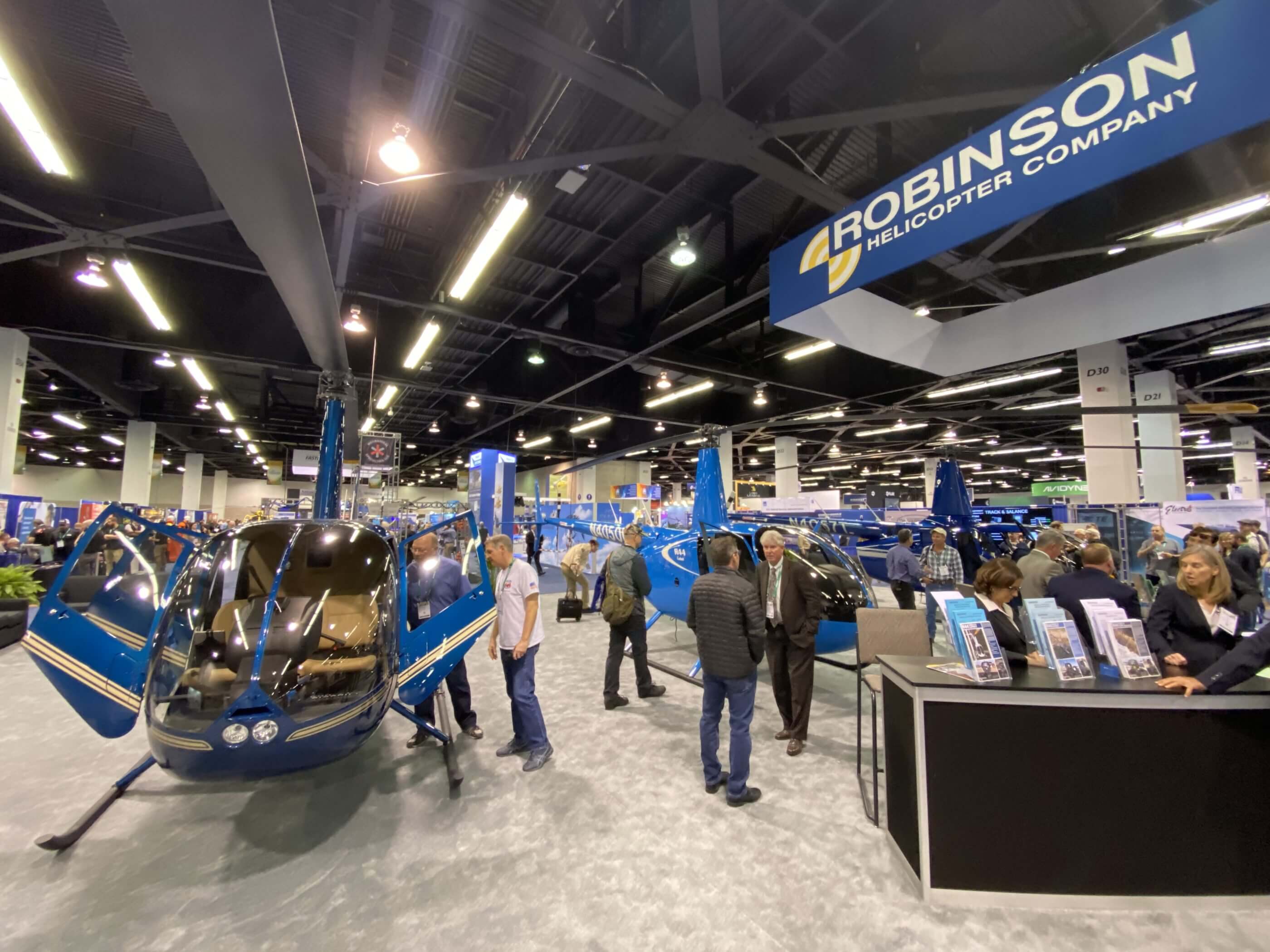An impact resistant windshield, slimline aux fuel tank, fuel flow meter, boarding steps, and electric ignition are among the projects in various stages of completion at Robinson Helicopter Company (RHC), as the manufacturer continues to enhance its product line.

And, in response to the growing interest in urban air mobility, the company has also created a helideck outside its Torrance, California, headquarters, which it is inviting customers to view.
During a wide-ranging briefing at HAI Heli-Expo 2020 in Anaheim, California, company president Kurt Robinson also revealed the manufacturer had a “slower year” in terms of sales in 2019. The 196 sales (which included 19 R22s, 54 R66s, and 123 R44s) represented a drop of about 100 over the previous year, he said.
The leading market was Australia, followed by Canada and China.
However, an uptick in sales over the past three months showed more promise for 2020, Robinson noted. “We’ve gotten off to a really strong start,” he said. “Right now, I’m very optimistic.”
Because of that, RHC’s production rates have been set at one R22, two R66s, and three R44s per week for 2020. “At that current rate, we’re actually sold out for the first six months for both the R44 and R66,” said Robinson.
The R66 is performing particularly well, he said, noting that the company will deliver the 1,000th of the type during the next three months. The global R66 fleet has now notched 1.1 million flight hours. “The aircraft is doing amazingly well all over the world,” said Robinson.
In terms of product updates, the company has just completed work on an impact resistant windshield, designed to protect pilots and passengers from the dangers of a bird strike. The upgraded windshield is made from polyurethane, which replaces the acrylic that’s in the existing windshield.
“The windows were designed in accordance with [Federal Aviation Regulations] part 29, and they were designed to deflect a two-pound bird in the R44 and R66 at 100 knots, and at 90 knots in an R22,” said Robinson.
He illustrated the capability of the windshield by showing a slow-motion video of a 2.2-pound bird being fired at it from a cannon (simulating a strike at 115 knots). The windshield cushioned the bird’s impact before flexing out again and pushing the bird out. He said a similar strike would go right through the existing windshield.
The enhanced windshield will add about 1.2 pounds of weight to the aircraft, at a cost of about $6,800 for the R44 and R66.
The creation of the helideck at RHC’s delivery center was in response to the growing urban air mobility sector, following questions the OEM has been fielding about heliports and where people can land.
The prototype design features a 20-by-20-foot helipad raised 10 feet off the ground, surrounded by a six-foot perimeter safety area covered by chains. The helipad is accessed by a four-foot-wide staircase, and there is room underneath for two cars to park.
“We’re interested in safety, what we want to try and do [with the design] is, ‘How do you get that helicopter up off the ground so people aren’t endangering themselves?’ ” said Robinson.
“It’s not something that is completed or approved, we’ve been getting a lot of comments on it, and we’re landing and taking off on it. . . . We’re just trying to get a proof of concept.”
The helideck is designed with off-the-shelf components to potentially offer customers the ability to create their own from RHC’s design, rather than being a product for the company to sell.
Other product updates include the installation of a system to protect against engine overspeed during startup, a slimline aux fuel tank for the R66 that provides an additional hour’s worth of fuel, and electronic ignition. The latter is likely to be available within the next six months, Robinson noted.
The company is also working on approving a Shadin fuel flow meter that provides real flow-time data to a Garmin GTN GPS receiver. This allows it to calculate remaining fuel, and present fuel range rings on a moving map display.
Robinson said RHC is “very much still working” on a diesel-powered R44. “We’re actually very pleased with the progress,” he said.
Robinson said RHC is open to other forms of power, including electric.
“We’ve been working and talking a lot to the different battery manufacturers; certainly we’re agnostic as to how our aircraft is powered,” he said. “If and when electric becomes viable . . . we would jump over to it fairly quickly.”
Finally, he announced that the company’s longstanding chief flight instructor, Tim Tucker, is stepping down to enable him to spend more time working with the U.S. Helicopter Safety Team and consulting with the Federal Aviation Administration. While Tucker will continue to teach Robinson’s safety course, he will be replaced as the company’s chief flight instructor by Bob Muse, who is currently the assistant chief flight instructor.









